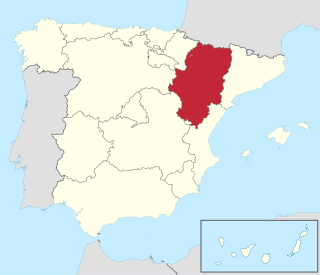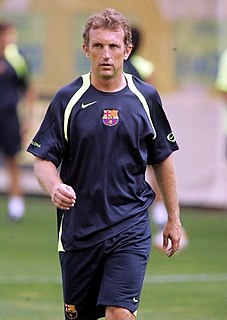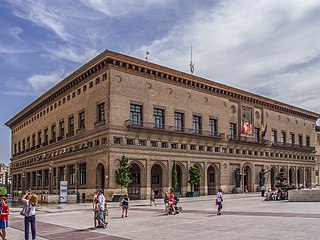
The Dominican Republic is a country located on the island of Hispaniola in the Greater Antilles archipelago of the Caribbean region. It occupies the eastern five-eighths of the island, which it shares with Haiti, making Hispaniola one of only two Caribbean islands, along with Saint Martin, that is shared by two sovereign states. The Dominican Republic is the second-largest nation in the Antilles by area at 48,671 square kilometers (18,792 sq mi), and third-largest by population, with approximately 10.7 million people, down from 10.8 million in 2020, of whom approximately 3.3 million live in the metropolitan area of Santo Domingo, the capital city. The official language of the country is Spanish.

Aragon is an autonomous community in Spain, coextensive with the medieval Kingdom of Aragon. In northeastern Spain, the Aragonese autonomous community comprises three provinces : Huesca, Zaragoza, and Teruel. Its capital is Zaragoza. The current Statute of Autonomy declares Aragon a historic nationality of Spain.

Zaragoza, also known in English as Saragossa, is the capital city of the Zaragoza Province and of the autonomous community of Aragon, Spain. It lies by the Ebro river and its tributaries, the Huerva and the Gállego, roughly in the center of both Aragon and the Ebro basin.

Real Zaragoza, S.A.D., commonly referred to as Zaragoza, is a football club based in Zaragoza, Aragon, Spain, that currently competes in the Segunda División, the second tier of the Spanish league system. Zaragoza holds its home games at La Romareda.

Zaragoza, also called Saragossa in English, is a province of northern Spain, in the central part of the autonomous community of Aragon. Its capital is Zaragoza, which is also the capital of the autonomous community. Other towns in Zaragoza include Calatayud, Borja, La Almunia de Doña Godina, Ejea de los Caballeros and Tarazona.

Yautepec is a municipality located in the north-central part of the Mexican state of Morelos. The municipal seat is the city of Yautepec de Zaragoza. It stands at 18°53′N99°04′W.
Juan is a given name, the Spanish and Manx versions of John. It is very common in Spain and in other Spanish-speaking communities around the world and in the Philippines, and also in the Isle of Man. In Spanish, the diminutive form is Juanito, with feminine form Juana, and feminine diminutive Juanita.

Máximo Gómez y Báez was a Dominican Generalissimo in Cuba's War of Independence (1895–1898). He was known for his controversial scorched-earth policy, which entailed dynamiting passenger trains and torching the Spanish loyalists' property and sugar plantations—including many owned by Americans. He greatly increased the efficacy of the attacks by torturing and killing not only Spanish soldiers, but also Spanish sympathizers. By the time the Spanish–American War broke out in April 1898, Gómez had the Spanish forces on the ropes. He refused to join forces with the Spanish in fighting off the United States, and he retired to a villa outside of Havana after the war's end.

The University of Zaragoza, sometimes referred to as Saragossa University is a public university with teaching campuses and research centres spread over the three provinces of Aragon, Spain. Founded in 1542, it is one of the oldest universities in Spain, with a history dating back to the Roman period. Prime Ministers Pascual Madoz, Manuel Azaña, Salustiano de Olózaga and Eusebio Bardají, the Nobel Prize laureate and father of modern neuroscience Santiago Ramón y Cajal, the Catholic saint Josemaría Escrivá and the Cuban national hero Jose Marti studied at this university.
Plaza de España may refer to:

Zaragoza Airport is an international airport near Zaragoza, Aragón, Spain. It is located 16 km west of Zaragoza, 270 km west of Barcelona, and 262 km northeast of Madrid. In addition to serving as a major cargo airport it is also a commercial airport and the home of the Spanish Air and Space Force 15th Group.

Daroca is a city and municipality in the province of Zaragoza, Aragon, Spain, situated to the south of the city of Zaragoza. It is the center of a judicial district.

Ascó is a large village in the comarca of Ribera d'Ebre, Catalonia, Spain, on the right bank of the Ebre river at the feet of the Serra de la Fatarella range. The village of Ascó is known for its nuclear power station, and for excellent fishing in the river.

Monzón is a small city and municipality in the autonomous community of Aragon, Spain. Its population was 17,176 as of 2014. It is in the northeast and adjoins the rivers Cinca and Sosa.

Basket Zaragoza 2002 S.A.D., more commonly referred to as Basket Zaragoza and as Casademont Zaragoza for sponsorship reasons, is a professional basketball club based in Zaragoza, Spain. The team plays in the Liga ACB. Their home arena is the Pabellón Príncipe Felipe.
Jerónimo Xavierre was a Spanish Dominican theologian.
Luis de Aliaga Martínez (1560–1626) was the Grand Inquisitor of Spain from 1619 to 1621.

Albert Roca Pujol is a Spanish retired footballer who played as a central defender, currently a manager.
Manuel García Gil was a Spanish Roman Catholic cardinal and member from the Order of Preachers who served as the Archbishop of Zaragoza from 1858 until his death. He served prior to this as the Bishop of Badajoz and before that served as a professor in various Dominican houses. Pope Pius IX raised him to the cardinalate in 1877 as the Cardinal-Priest of Santo Stefano al Monte Celio.

Zaragoza City Hall is the seat of the city council in Zaragoza, Aragon, Spain. It is located in the Plaza of Our Lady of the Pillar, and is built in the Renaissance Revival style.















